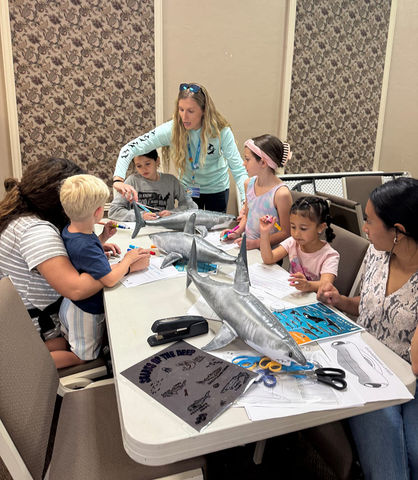CHIMAERA FACTS
Chimeras, often referred to as"ghost sharks," are part of the Chondrichthyes classification, just like sharks, skates, and rays. They share a common ancestor (from about 400 million years ago) with modern-day sharks. 50 species of Chimera exist today. Due to the depth at which they reside, little is known about chimeras compared to their elasmobranch relatives. While there are a few coastal species, the majority of chimeras reside at depths at or below 500m (1,600ft). Chimeras are opportunistic feeders that consume a wide variety of invertebrates. Chimeras can be anywhere from 60cm to 120cm in length. They are oviparous, which means they reproduce by laying eggs. Chimeras have large pectoral fins, dorsal fins, and eyes. Male chimeras possess a tentaculum on their forehead that attaches to the female to hold them in place during mating. Unlike sharks, chimeras only have one gill opening on each side of their body. Chimaeras have permanent tooth plates (unlike sharks which have replaceable teeth) and the upper tooth plate is fused to the neurocranium (skull). These plates help them consume a variety of crunchy, benthic prey, such as crustaceans. As the chimaera grows, its jaw strength (and crushing force) increases substantially, allowing the chimaera to consume a wider variety of prey as adults.

Rabbit fish - Photo by Andy Murch

Spotted ratfish - Photo by Andy Murch

SPOTTED RATFISH - FACTS
(Hydrolagus colliei)
-
The spotted ratfish belongs to the “short-nosed” chimaera family, Chimaeridae
-
It can grow to nearly 1m in length
-
Spotted ratfish are found in the northeast Pacific, from southeastern Alaska to Baja California, at depths of 0-913m (most common 50-400m).
-
Spotted ratfish are one of the few species of chimaera kept in captivity.
-
Like all chimaeras, the spotted ratfish has a long, pointed, and serrated dorsal spine. The dorsal spine is mildly poisonous and used for defense. Spotted ratfish are eaten by other sharks, some seabirds, and even seals. In Washington State, some seal deaths have been caused by internal trauma from ingesting chimaera spines.
Spotted ratfish photo by Andy Murch
ADDITIONAL RESOURCES
JOIN THE SHIVER!
SHIVER: Collective noun for a group of sharks.
Learn about upcoming opportunities, dive into featured species, SEA what we've been up to, and get first-access to new FREE educational resources!






















